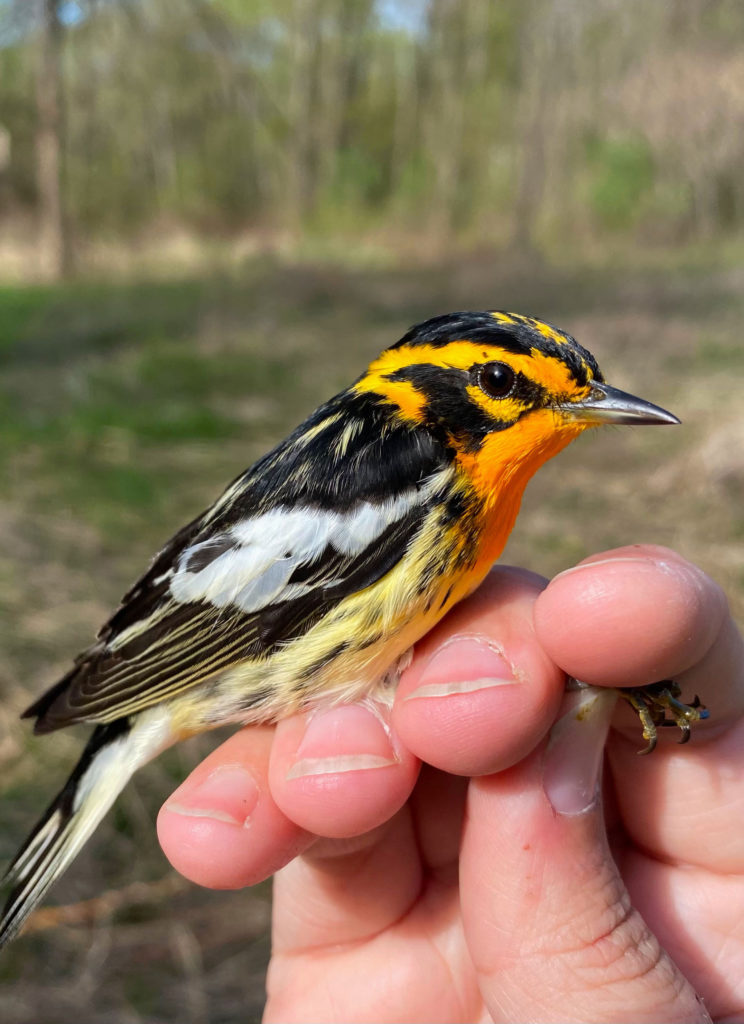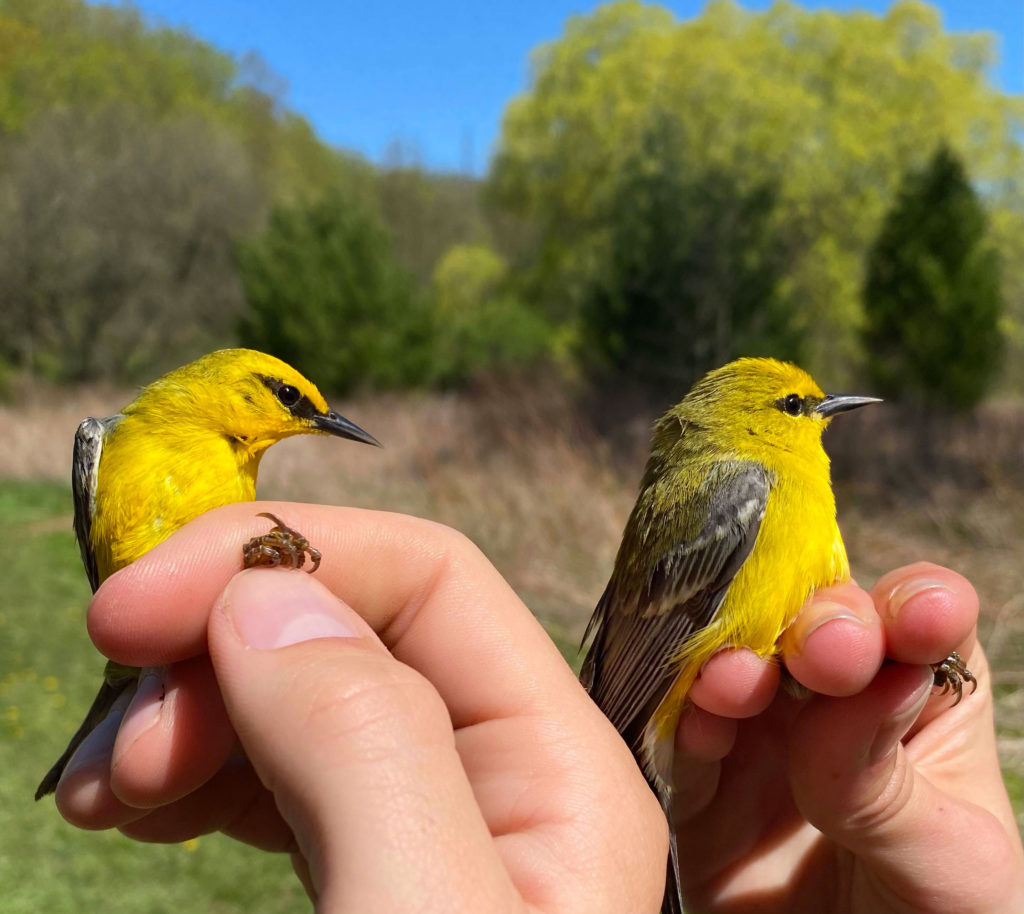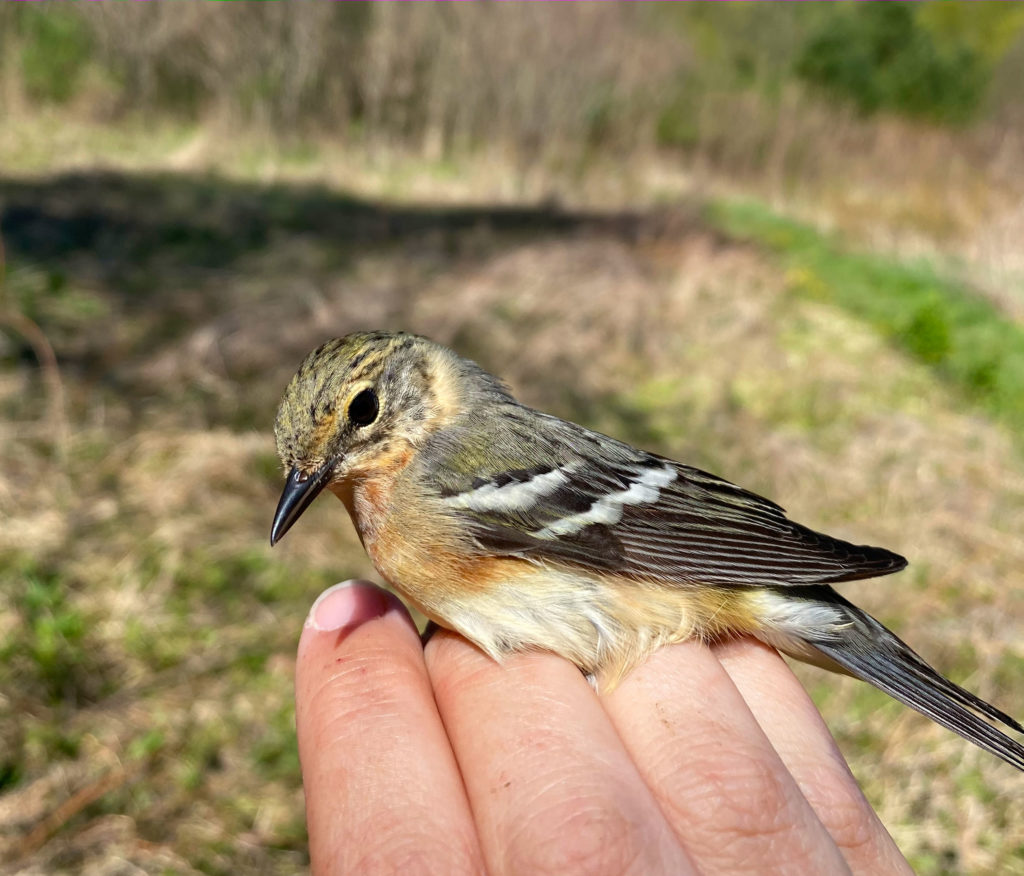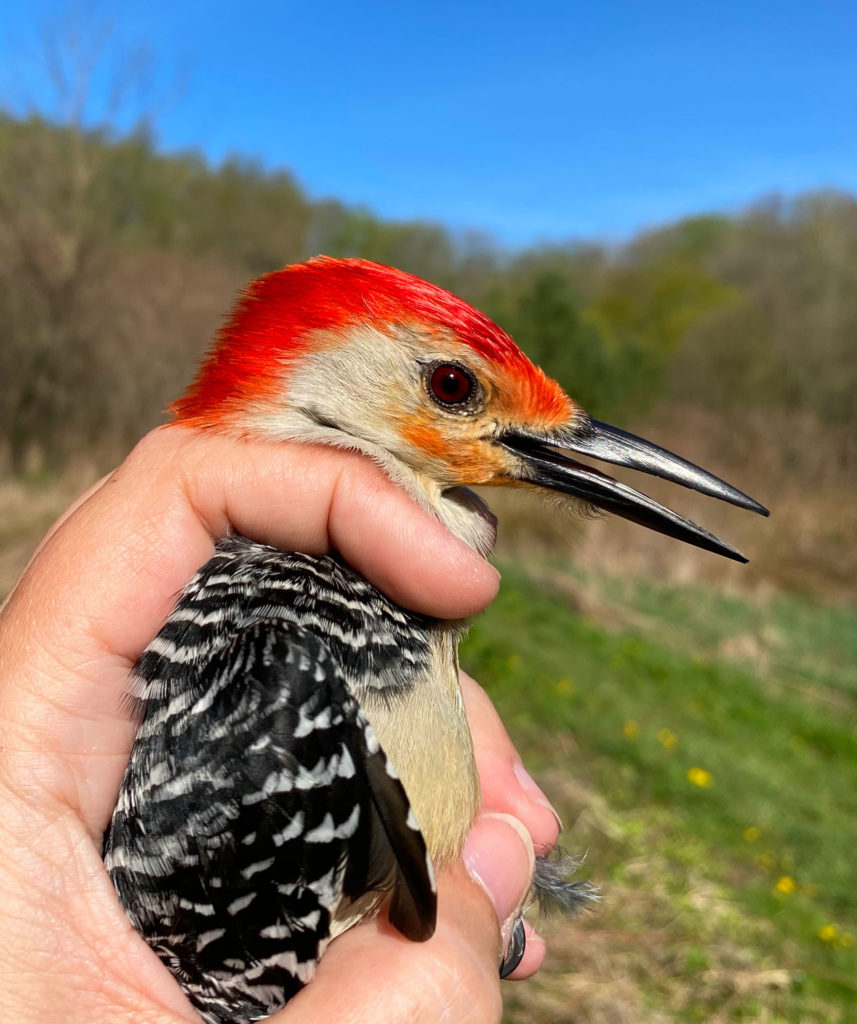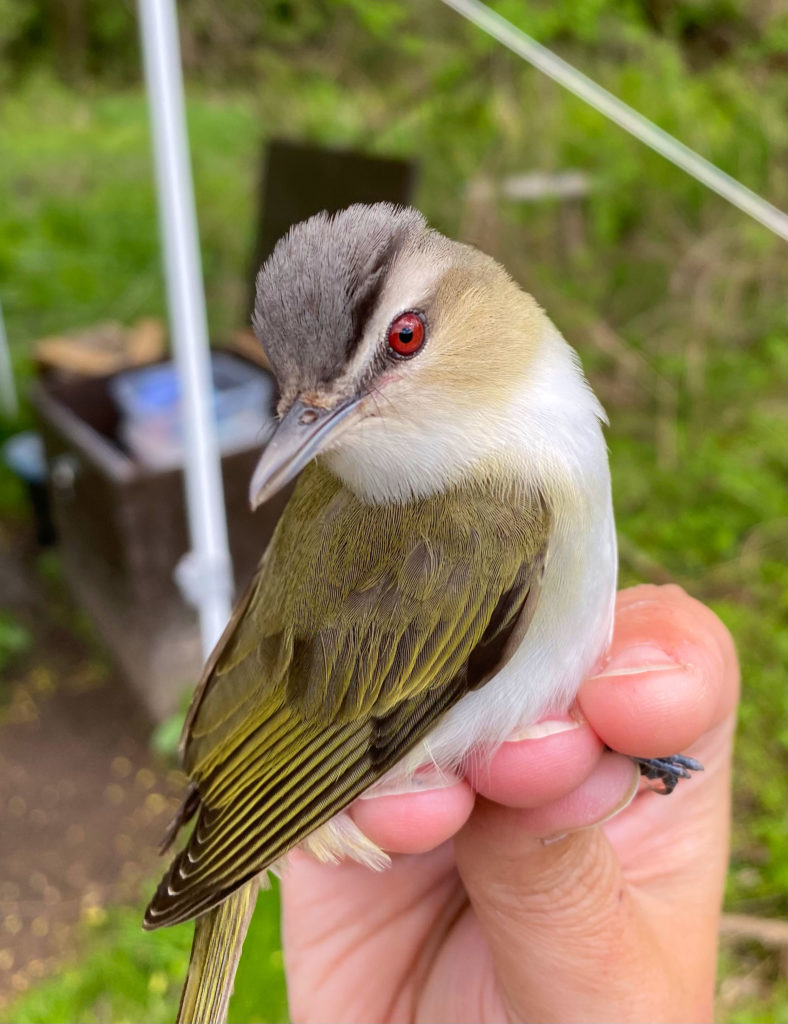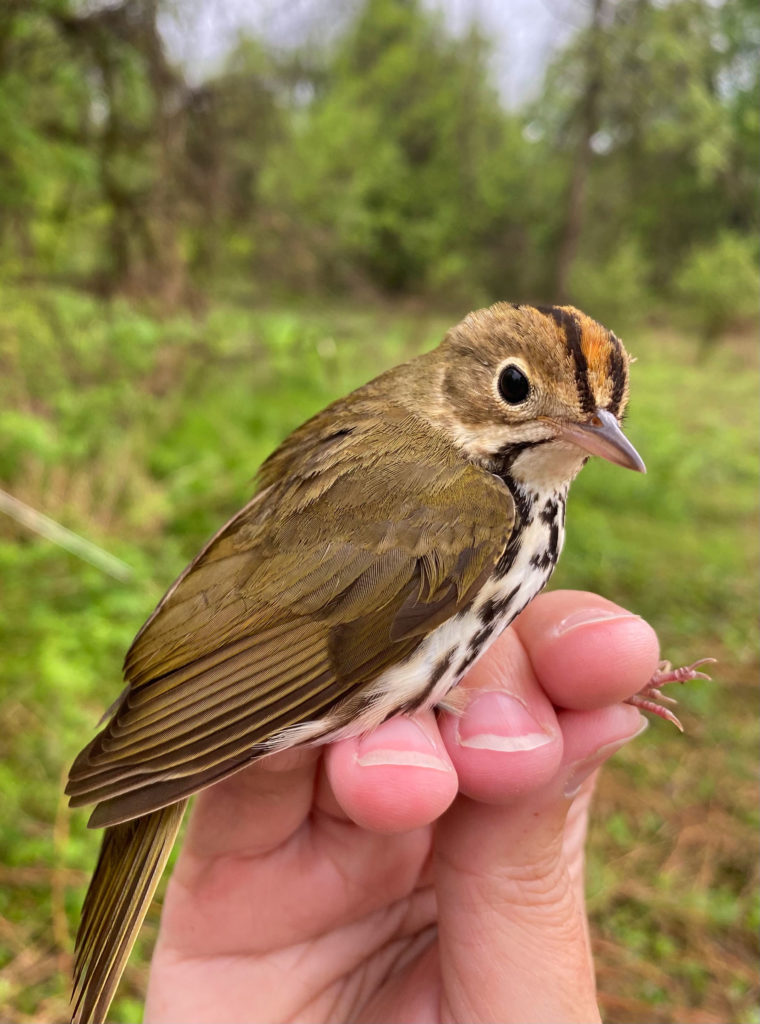Updates from the week of May 13-20:
Migration has progressed so quickly! I have unfortunately been rather busy lately, so I have not been able to get updates posted quite as quickly as I’d like. However, there have been some great highlights from the past week and half or so of banding that I’d like to share. So I have combined them into two posts where you can see the totals, and photos of beautiful and memorable birds.
May 13 – Lowville
We had an absolutely fantastic day on the 13th. The conditions made for a good night of migration the night before and we had a good diversity of migrants, both observed and in our nets. Ben and I were joined by young volunteers; Sarah and Sam. Sam recently endured a sports-related knee injury but still managed to make it out to the site on crutches. I find nothing motivates birders to get into the field like a potentially good migration day, injured or not! We had many lovely birds but a little flock of warblers in the nets including 3 Bay-breasted Warblers and a Blackburnian Warbler was definitely one of the highlights. Later in the morning, we started to hear the distinct buzzy song of the Blue-winged Warbler, and hoped we might catch one. By the end of the morning, we had managed to catch no less than 3 Blue-wings! The Lowville site typically catches approximately 1-2 Blue-winged Warblers per season (as per BGO), so 3 in one day was certainly an unexpected and unprecedented treat! We ended the day with 49 birds captured (35 banded), and a total of 79 species observed!!
BANDED:
1 Yellow-bellied Flycatcher
3 Gray Catbird
1 Swainson’s Thrush
1 Veery
5 American Goldfinch
1 Lincoln’s Sparrow
1 Song Sparrow
5 Common Yellowthroat
2 Yellow Warbler
4 Magnolia Warbler
2 Blackburnian Warbler
3 Blue-winged Warbler
1 Black-throated Blue Warbler
3 Bay-breasted Warbler
1 Northern Waterthrush
1 Indigo Bunting
RECAPS:
2 Downy Woodpecker
1 Red-bellied Woodpecker
1 Black-capped Chickadee
1 Ruby-crowned Kinglet
2 Gray Catbird
1 American Goldfinch
1 Song Sparrow
2 Indigo Bunting
3 Rose-breasted Grosbeak
TOTAL: 49 (35 banded, 14 recaps)
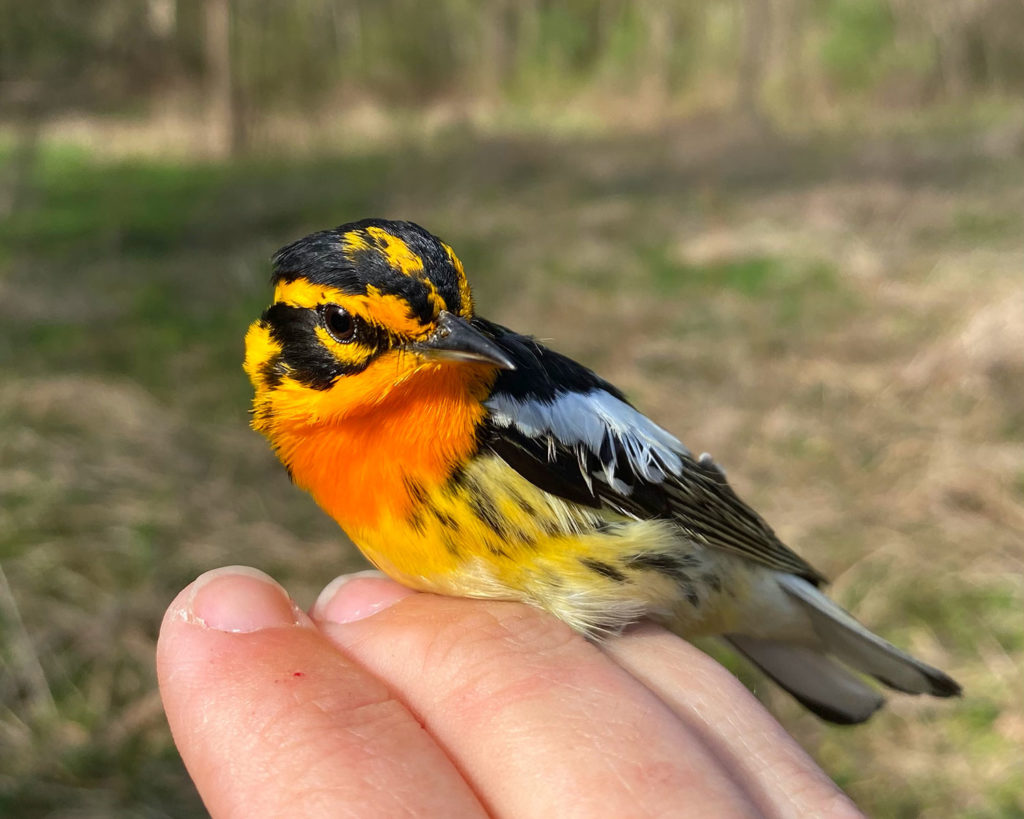
I had to include two photos of this little jewel of a warbler.. male Blackburnian Warblers sport fiery orange plumage on their chest/throat, and in person it is so bright it almost glows.
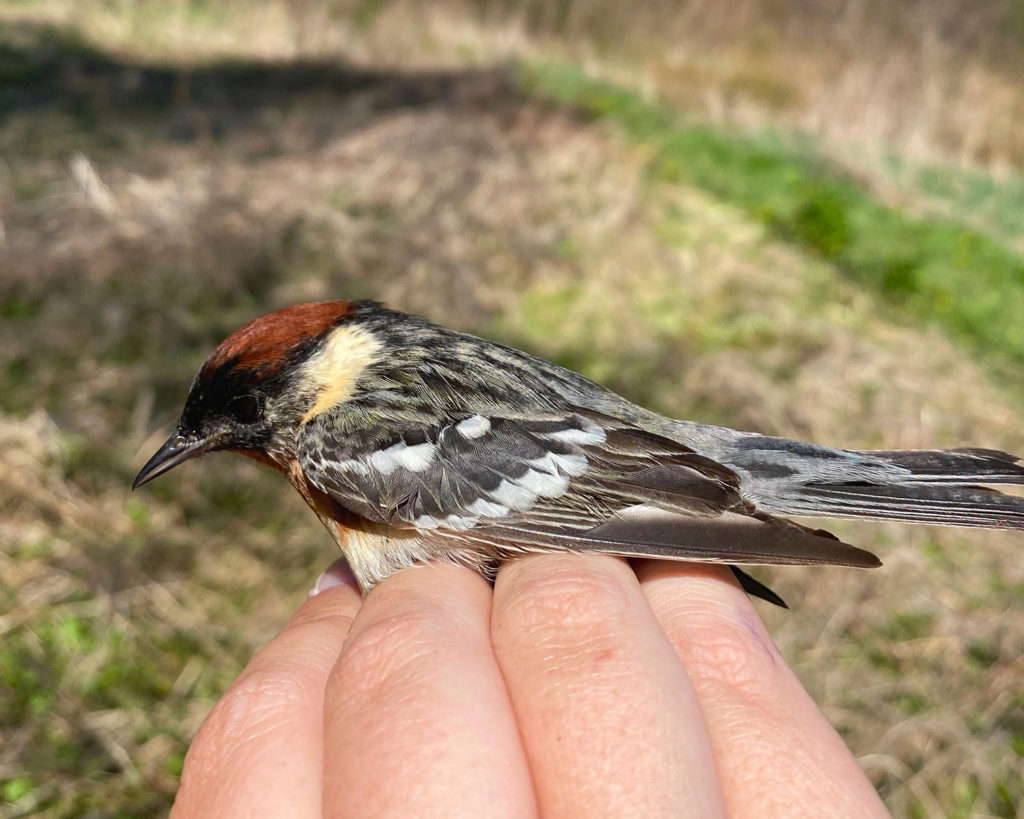
Bay-breasted Warbler – Such a uniquely colored warbler.. I love seeing them in their breeding plumage. The females are not as striking but still beautiful (see below).
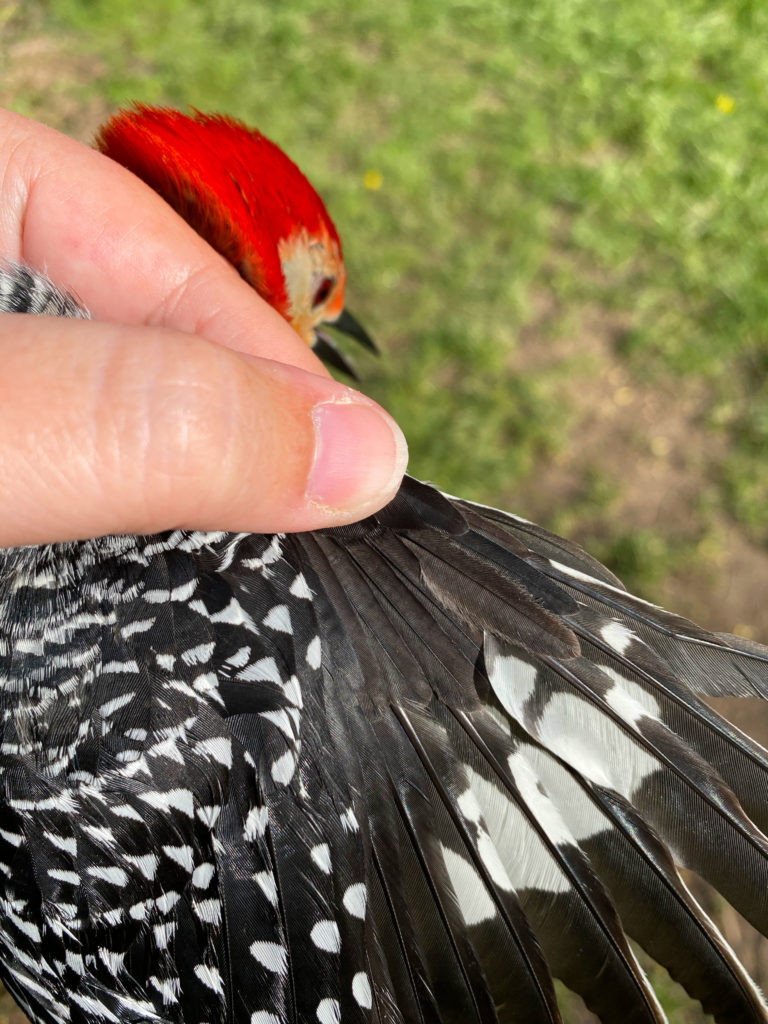
Here’s a clue that we used to help determine the age of this Red-bellied Woodpecker – the feathers just below my thumb (called the primary coverts) show at least three distinct generations (or ages of) feathers which helped us figure out this bird is at least four years old! In banding lingo that’s After-third-year
May 16 – Lowville
Migration was fantastic the night of May15/16 and we had tons of birds foraging in the canopy at the site, but unfortunately it was a rainy wet day so we were only able to open our nets for a couple hours in the morning. We got them open again later in the afternoon once the rain let up, but by then the bird activity had slowed significantly. We did catch a pair of Blue-Gray Gnatcatchers though, which was exciting because this is the first time this species has been caught at the Lowville site!
BANDED:
1 Red-eyed Vireo
1 Yellow-bellied Flycatcher
1 Traill’s Flycatcher
2 Blue-Gray Gnatcatcher
4 Gray Catbird
1 Common Yellowthroat
2 Magnolia Warbler
1 Tennessee Warbler
2 Chestnut-sided Warbler
1 Ovenbird
RECAPS:
1 White-breasted Nuthatch
1 Black-capped Chickadee
1 Gray Catbird
1 American Goldfinch
1 Baltimore Oriole
1 Common Yellowthroat
TOTAL: 22 (16 banded, 6 recaps)

The Blue-Gray Gnatcatcher is a tiny bird.. about the size of kinglet but with a long tail. They are not particularly uncommon in our area but because of their habit of staying in the canopy, this is the first time we’ve been lucky enough to catch them. We suspect they are building a nest somewhere nearby!
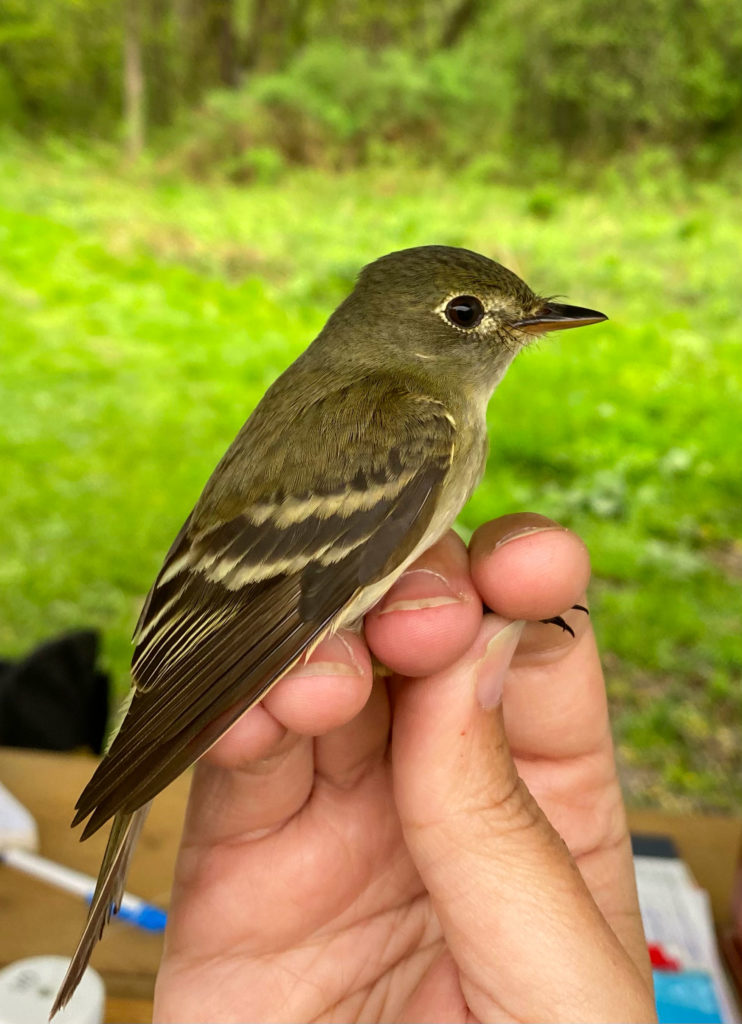
Traill’s Flycatcher – we heard both Willow and Alder singing near our nets, but unfortunately this bird flew off silently upon release so we were not able to identify it down to species (which is usually the case).
May 17 – Lowville
BANDED:
2 Tree Swallow
1 Red-eyed Vireo
4 Gray Catbird
1 Baltimore Oriole
5 Common Yellowthroat
1 American Redstart
2 Tennessee Warbler
1 Magnolia Warbler
1 Chestnut-sided Warbler
2 Ovenbird
2 Indigo Bunting
1 Rose-breasted Grosbeak
RECAPS:
1 American Robin
3 Gray Catbird
4 Baltimore Oriole
1 Common Yellowthroat
1 Indigo Bunting
TOTAL: 33 (23 banded, 10 recaps)
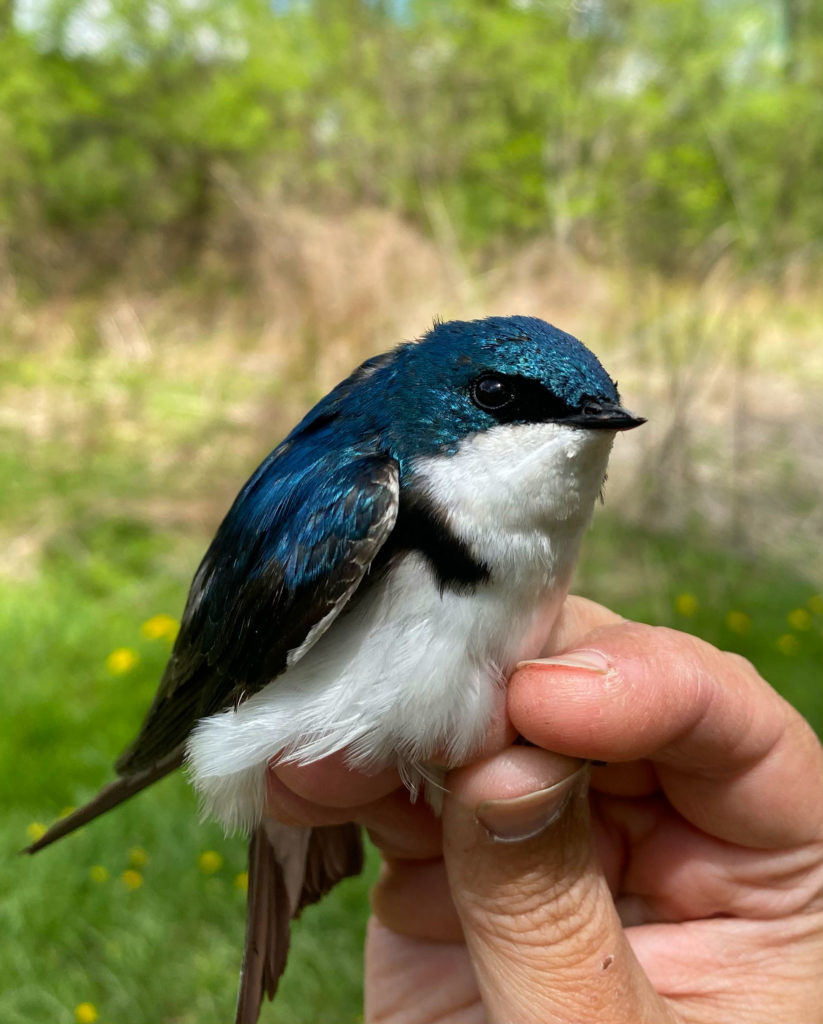
Tree Swallow! The first individual to be banded at the Lowville site! You might be able to notice in this photo, this bird actually has a mild beak deformation. It certainly doesn’t seem to be having a negative impact on the bird, s/he was in very healthy body condition.
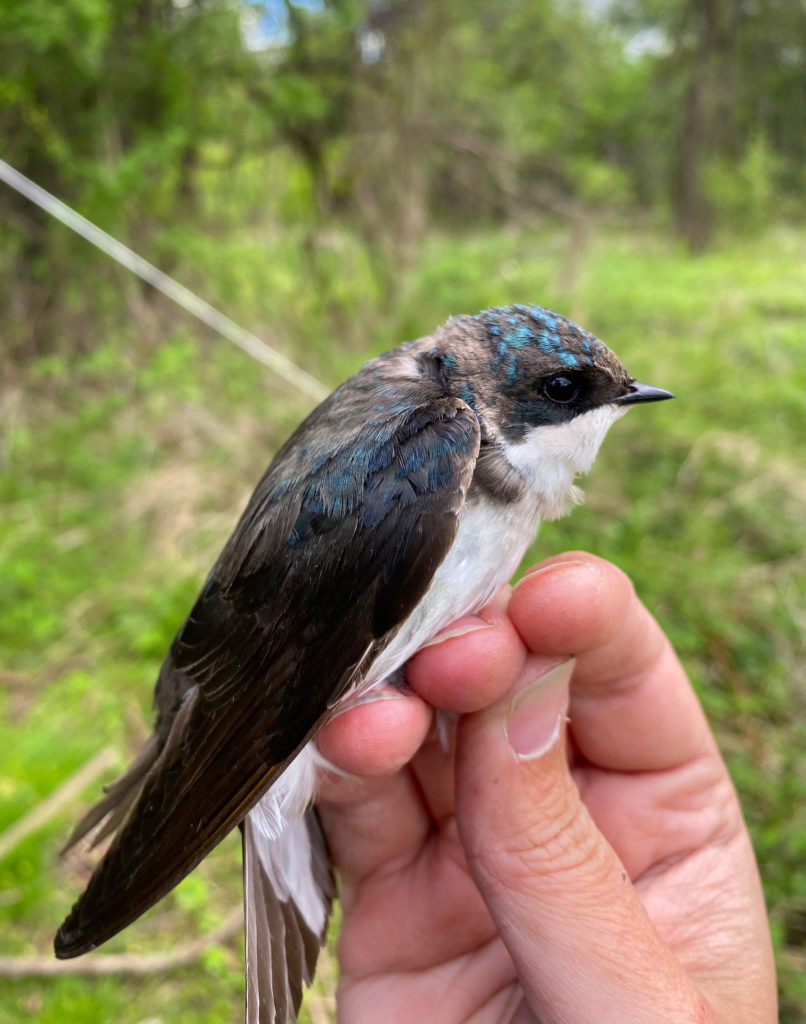
These two Tree Swallows hit the net together (and were released together). Notice how long their wings are. These birds seem like they are “all wing” when you see them up close, which makes sense since swallows live the majority of their waking life flying.
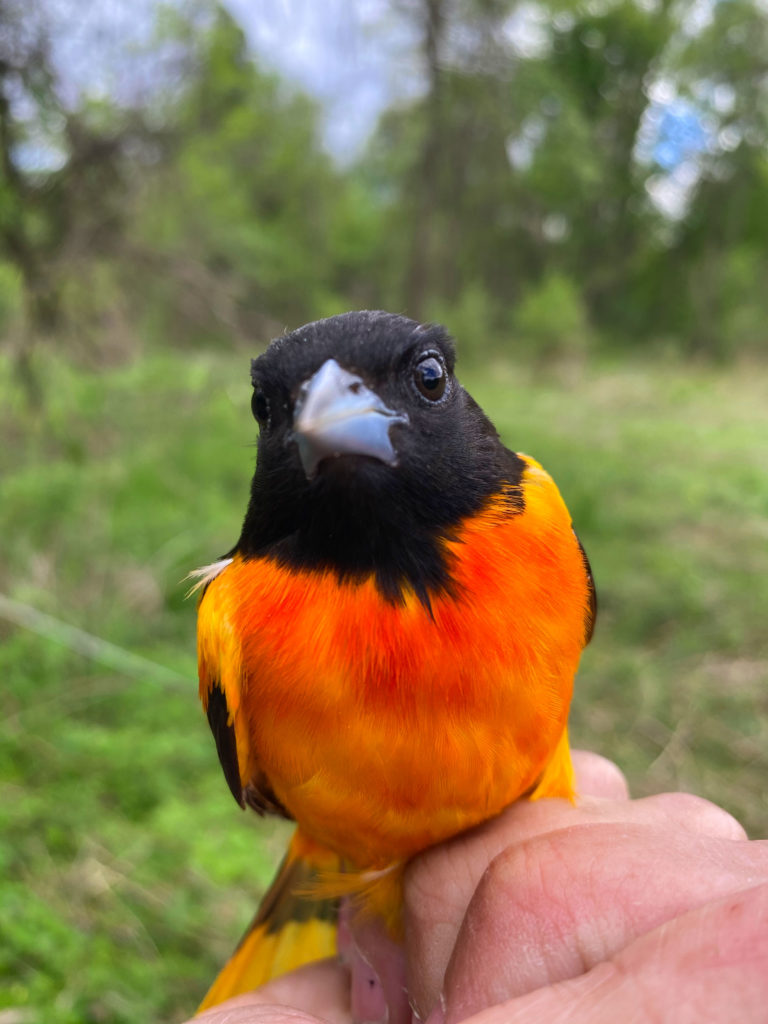
Baltimore Oriole – this after-second-year male oriole has such bright orange plumage that the area right on the front of his breast is approaching almost reddish orange! So incredibly vibrant.
~Update continued in Part 2~

